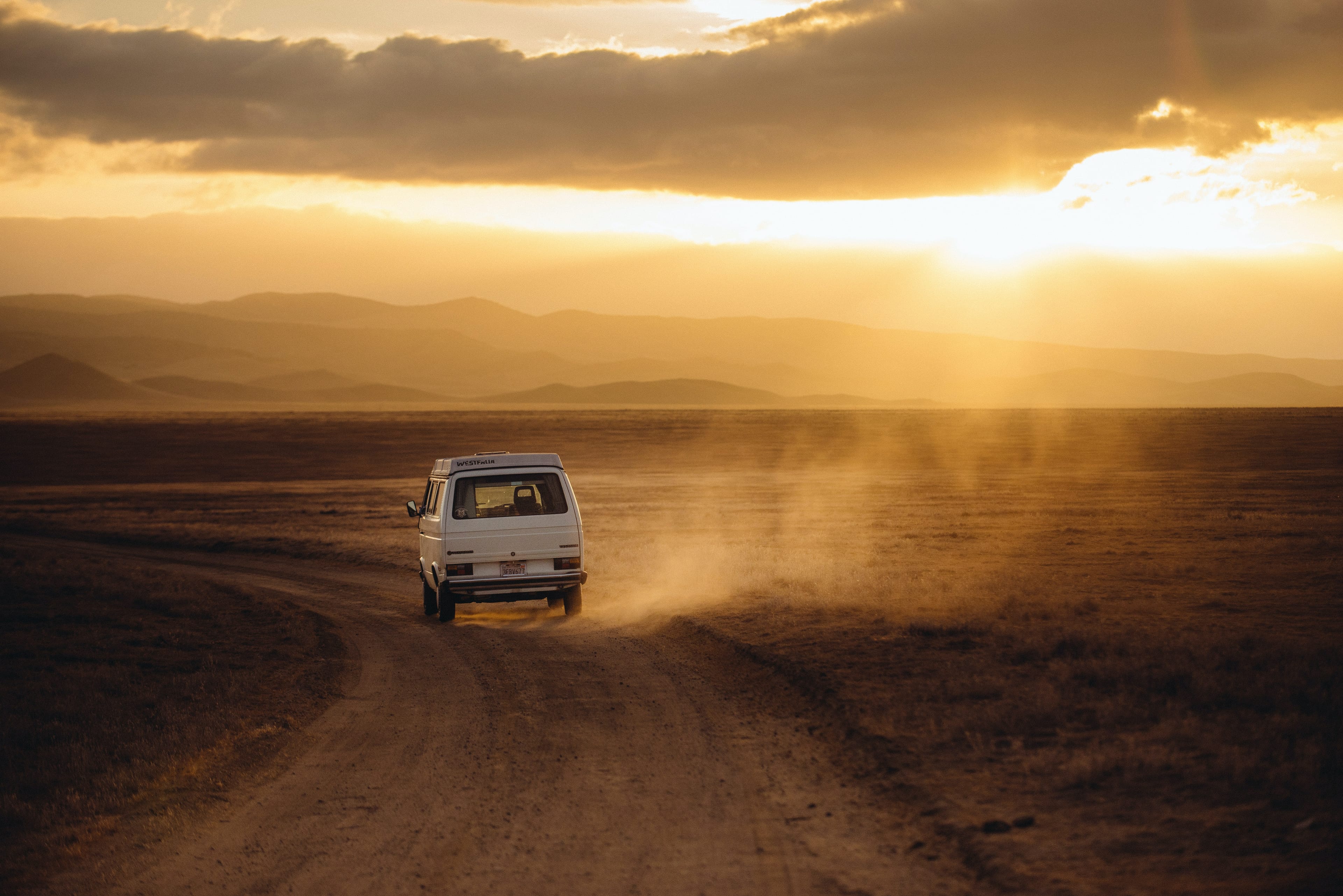50 RV Upgrades
You have the rig. You have the dream. Now the question is: how can you bring those two things together to live your best life on the open road?
No secret, even the best RVs usually need DIY TLC: upgrades to mechanical systems, safety and maintenance gear and maybe just a little aesthetic improvement. The guide that follows will steer you right. We’ve picked dozens of after-market products that address key issues. We’ve pinpointed some upgrades that can hone your road-tripping, whether you’re an off-grid overlander or strictly a campground regular. Here and there, we’re going to talk about making your home on wheels look and feel better, too.
We’ve talked to experts, raided our notebooks and found some of the best ways to roll. Good luck out there!
Electric + Solar
Guard against the surge.
The electrical grid undergoes frequent power surges, and voltage spikes can severely damage your RV’s electronic components. Lightning storms are particularly dangerous. When you’re connected to campground power, put a surge protector to good use: Hughes Autoformer models (starting around $60) come with an array of built-in monitoring and control technologies.
Plug into the sun.
When you’re camping off-grid, solar power is the key to avoiding the noise and fuel that comes with a generator. Roof-mounted panels are great, but expensive. Portable solar units can deliver much the same benefit—with an extension cord, if you’re parked in the shade.
Get better at batteries.
When you store your RV, many small parasitic current draws will discharge your battery bank in a relatively short time. Batteries lose their charge, too, even when completely disconnected. A simple solution is to use a battery maintenance charger like this one from Battery Tender ($40). If you store your RV offsite, remove the batteries and charge them at home.
Become an inverter convert.
When you’re camping off-grid and not running a generator, it’s nice to have a source of 120V AC power to operate small appliances, charge phones and run laptops. The solution is an inverter, which converts 12-volt DC battery power to 120 volts AC (like shore power). Choose one that produces full sine wave power—not modified sine wave—and select a wattage higher than the maximum power draw you expect to have.
Keep the lights on.
You need to upgrade the electrical system in your rig if you want to boondock off-grid for any length of time. The best way to do that is with better batteries and quality solar panels. It’s a bit complicated to get into here, and there are a lot of options. But a few good places to start are flexible SunFlare panels and a 460Ah LiFePO4 Battery ($1,800) from Epoch. If you’re not comfortable with a DIY install, it’s a good idea to consult with an expert before upgrading your power system.
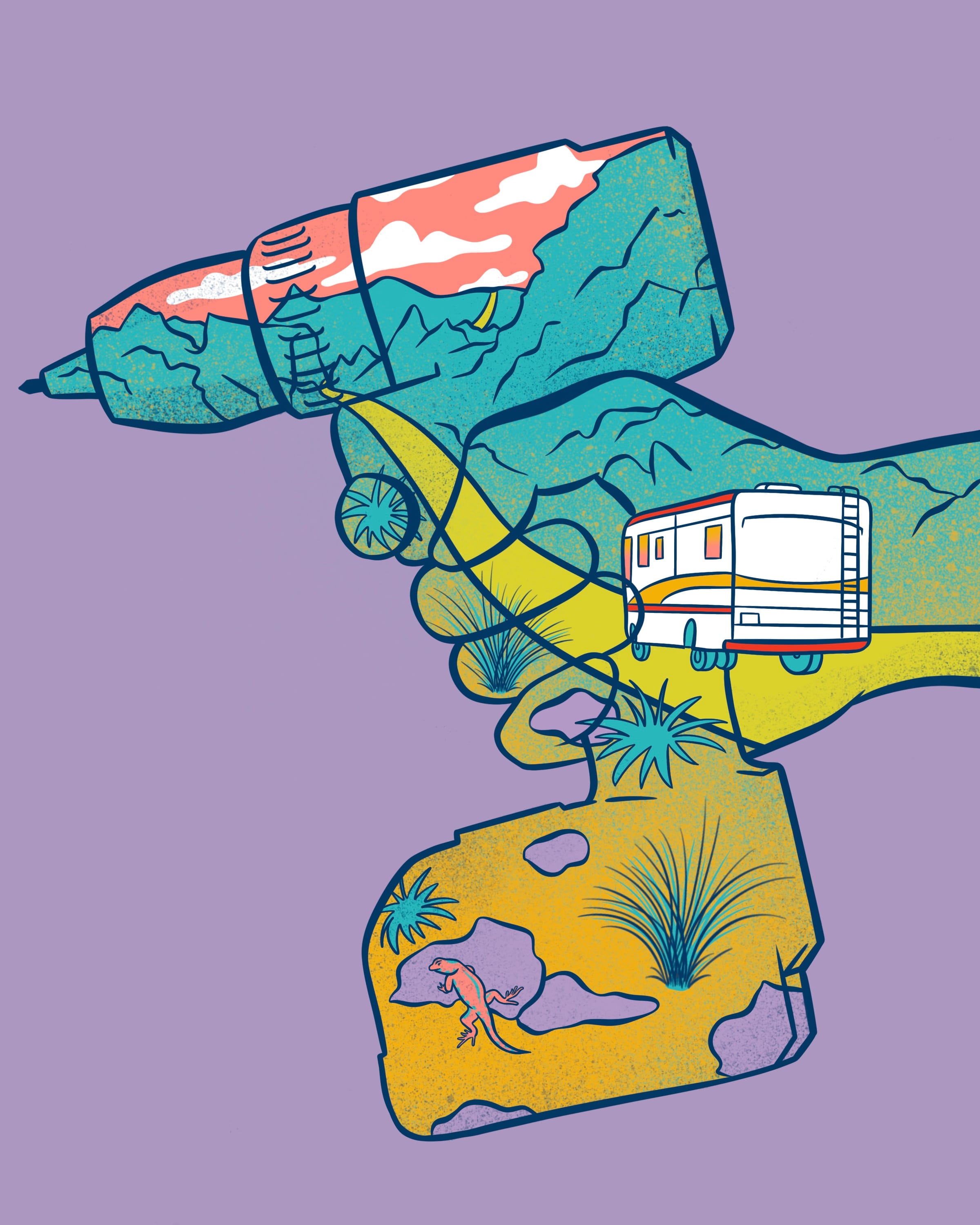
Staying Cool (or Warm!)
Set a screen.
An RV awning for shade is fundamental to campground life. But annoying bugs can drive even the hardiest soul back inside, shade or no shade. So, why not add a screen enclosure to ward off the airborne pests? Relax as you see fit. The Solera Family Room ($1,100), customizable to various awning widths, will show all lifeforms who’s boss.
Always be venting.
Boost air circulation with an electric power vent fan. (MaxxAir makes a range of models.) They move air in or out for optimum results, and may even allow you to go without air conditioning in some cases. Combine these units with an optional MaxxAir Fan Mate Cover to keep the rain out.
Relax in the Shade.
Picture the scenario: camping with a pile of bird dogs while hunting in Minnesota. During the day, it’s hot, and not a tree in sight. Luckily, there’s a 270-degree wrap-around awning from Alu-Cab) on our truck, and it keeps everybody, including the pups, cool. These awnings are way easier to use than awnings with stakes, and they can be deployed with walls to give you more space in bad weather.
Bonus pick: Travel trailers need a good awning, too, and we’ve had luck with the classic, spring loaded Zip=Dee awning. There aren’t any electric motors to break, and it’s still as tight as a drum after four years of use.
Don’t let the sun stream in.
On balmy days at camp, your living space can heat up as the sun bakes your rig. According to Hillary Whittaker and Kris Gustafson (@FuelYourWander), one of their most useful upgrades have been magnetic UV shades that can be custom fit to any RV. Consider the options from Magne Shade, which can cover the windshield or any other window along the RV. Not only do they keep the heat out, they add a little privacy, too.
Modify your air conditioning unit.
According to Chris Kapperman, who details RV upgrades on his @WhyWait YouTube channel, many standard AC units are inefficient, as air doesn’t always blow directly into the ducts. Instead, cool air is often lost in the dead space in the ceiling. He recommends opening your unit and installing foam blocks—a $12 modification that can make air flow three times faster.
Cozy up by the fire.
OK4WD is one of the premier overlanding custom shops in the U.S., and their fireplace upgrade for truck campers is one of many reasons why. The Dickinson P9000 is usually found on sailboats, but the company started installing them on Alu-Cab truck campers. We tested one for two weeks in Colorado while the snow fell outside—and wouldn’t do it again without one.
Camp all year long.
When temperatures drop below freezing, some of our traveling team breaks out the AirSkirts. Each inflatable set of AirSkirts is custom-made to your rig, giving you a perfect fit once they’re inflated. Best of all, they’re way easier to use and more efficient than traditional RV skirts.
Bonus pick: If you’re traveling a lot during colder months, consider a peel-and-stick tank heater like this one from Annod Industries.
Northwood’s AFox Edge is a Rugged, Value-Packed Towable
Sponsored
A travel trailer built for off-road exploration and off-grid camping.
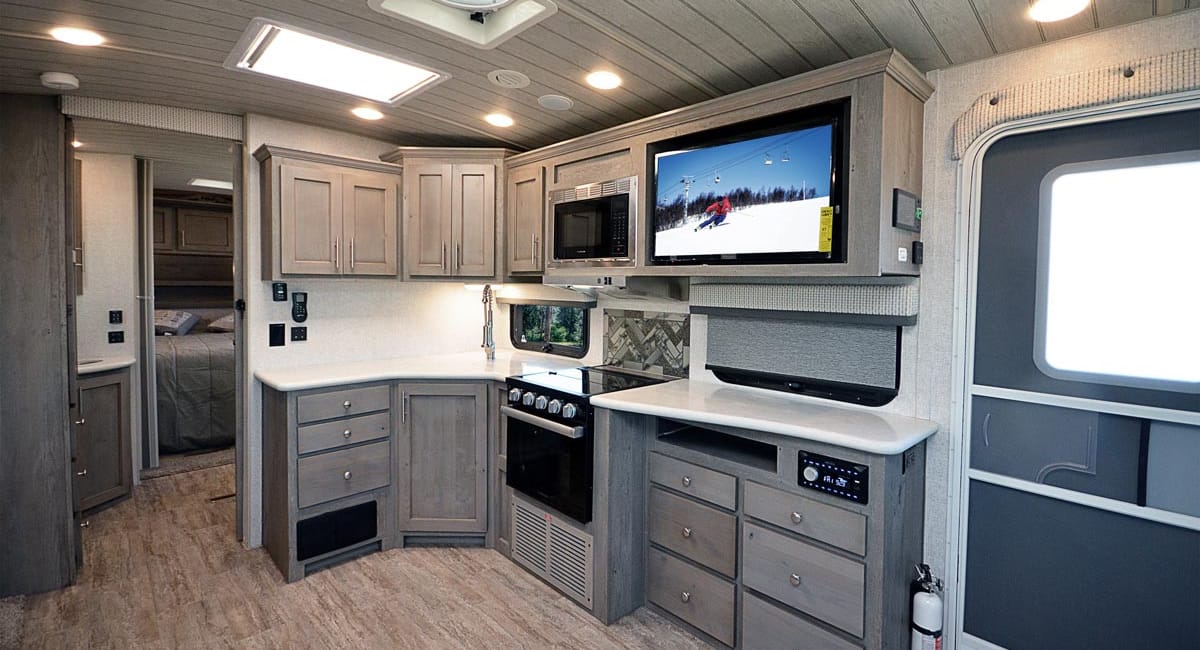
All Things Water
Keep your agua clean.
Campground hookups aren’t always the purest sources of water for drinking, washing or cooking. A high-quality water filter will add peace of mind and remove impurities before they enter your water system. Camco’s many options are one place to start looking.
Swap that faucet!
Kitchen and bathroom faucets—even shower heads—often cry out for a remix. New faucets can add visual interest, and in some cases improve water flow and other features. A shower head with several flow options is also handy when you’re showering off-grid, and need to conserve water. (The Oxygenics Fury models, for example, lend some industrial-modern chic and multiple flow options.)
Avoid the dreaded ice hose.
Cold weather can put the freeze on your vehicle’s freshwater hose. The obvious (but genius) solution? An electrically heated option. The Camco Freeze Ban model ($110) is ideal down to -20°F. The energy-saving thermostat only heats as needed.
Hot shower on demand.
Saying goodbye to hot water tanks in favor of tankless water heaters can be a liberating move. Check out the Truma AquaGo Comfort. It’s a plug-and-play option made to replace tank heaters or whatever else you have.
Build your own laundromat.
When you’re on the road, finding a place to do laundry can be a pain—especially if it means jockeying for machine space at a campground. Dustin and Leslie Waggoner, who spent five years full-time RVing, equipped their fifth wheel with a Splendide washer and dryer. If you’re short on space, you can purchase a combined unit for about $1,400.
Support your local sewer hose.
The last thing you want when you’re dumping your tanks is a sewage hose that’s flopping all around. Sewer hose supports like the Camco Sidewinder ($65) make the chore of dumping your holding tanks easier, quicker and less of a hassle.
Swap out that shower door.
The doors that come standard on most RV showers are typically very heavy and a pain in the neck to clean—an experience that was so annoying that full-time RVers Darlene and Barry Nicholson (@LikeThere’sNoTomorrow) ripped theirs out and replaced it with a retractable Nautilus shower door, which has a self-cleaning squeegee system built in.
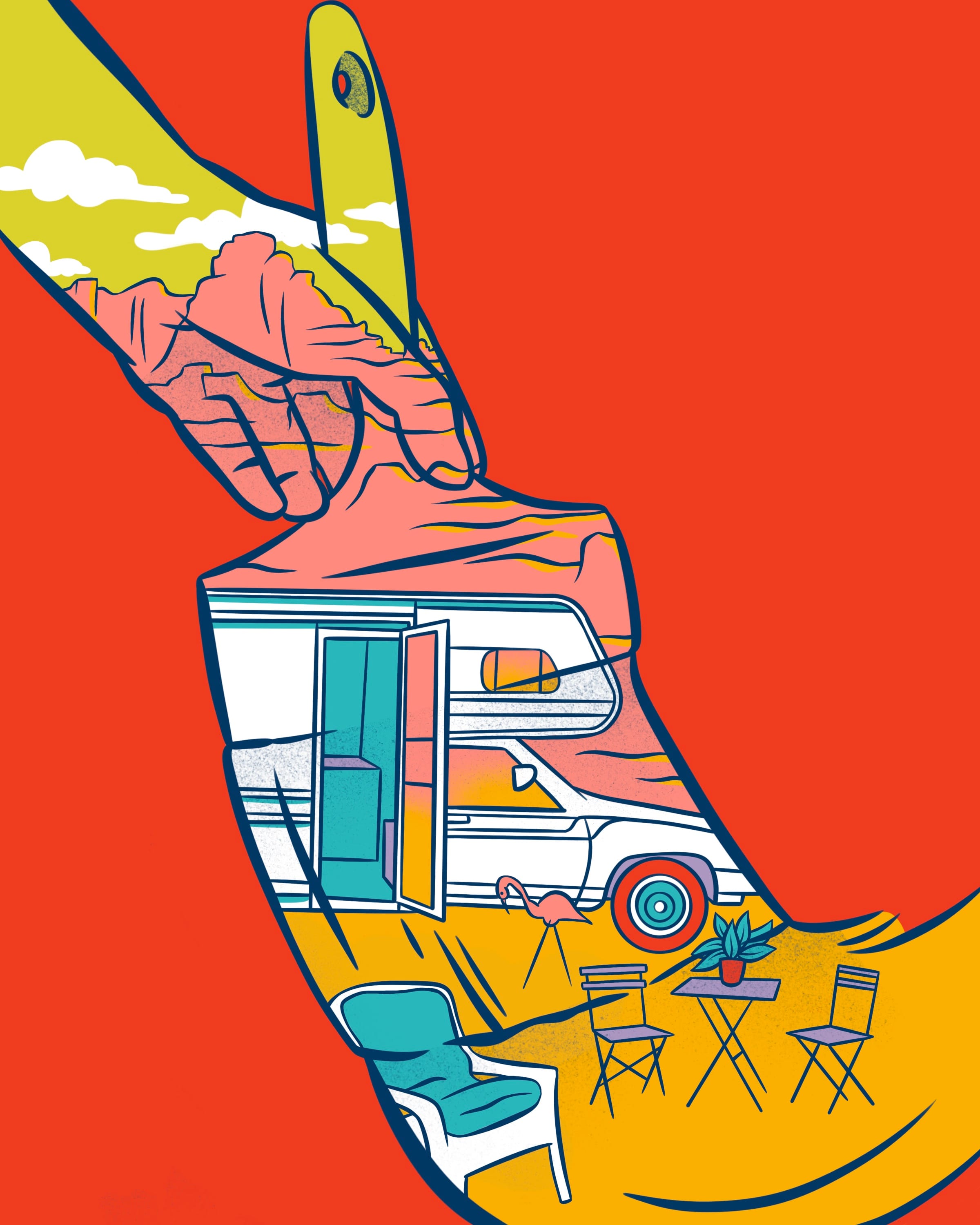
Interior Spaces
Add some color to liven up close quarters.
Whether your RV came off the factory line or you built or rehabbed it yourself, a great way to refresh space is to paint your cabinets a fun color. Pro tip: when choosing a color for a small space, choose earthy, muted tones, which will still feel neutral, like olive green, or a velvety navy blue.
Accent your walls with paneling.
To create visual interest and warmth, add small sections of paneling to the interior walls. Think classic or modern—like a board and batten, or a textured pattern crafted with real wood strips. Choose small sections, like the exterior of your onboard bathroom or a kitchen wall. A little goes a long way to cozy up the vibe.
Find a new place to hang your hat.
Quite literally! Hang a hook or two on a wall inside your RV, and display the cool hat you picked up on your travels—the woven one with the leather string from the Rose Bowl flea market, or the leather one from the little shop in Austin. Hats are well-crafted works of art—so why not display them as such? Little touches of personalization help establish a sense that this home on the road is yours.
Make your art choices stick.
Affix framed artwork or photos to your walls with heavy-duty Velcro. That way, you can leave your favorite pieces hanging on the walls when your vehicle is in motion. Hang tapestries or fiber art to add texture and color. One thing to watch for: Velcro won’t work for pieces that are too heavy or oversized.
Freshen up your linens and pillows.
Perhaps the quickest way to refresh a space is to deploy new bed linens or throw pillows. Choose fabrics and tones that will stand up to dirt, especially when traveling with kids and pets, and get a removable pillow or washable duvet cover which can be unzipped quickly and taken to the nearest laundromat.
Customize your interior hardware.
A quick and cost-effective way to personalize your space is swapping out you cabinet knobs and drawer pulls, especially if your RV came off the factory line with basic options. Hardware stores and online retailers carry endless options, from oil-rubbed bronze to brushed nickel to walnut wood. You can always consider vintage options, too: Scour antique stores or peruse Etsy to find something truly unusual.
Expand your sense of the outdoors.
There are all kinds of ways to turn your RV base into a more inviting version of the great outdoors. Roll out a new outdoor rug. String solar-powered twinkle lights across your awning, or snag a foldable outdoor loveseat to hang with your sweetie, your dog, or a fat paperback. (At the high end, check out the Snowpeak Campfield Futon; Lippert can also get this done for you.) Since you’ll break all of this down each time you leave camp, keep it simple—but make it cozy and functional.
Invite the neighbors for dinner.
A good grill can take the cramped cooking you do in a camper or overlanding rig outside—where it won’t set off smoke alarms. One hot pick, no pun intended: the PKGO from PK Grills. With the Flip Kit, you can turn the lid into another grill, doubling your cooking surface for unexpected guests.
Hack your tow rig’s bed.
Pick-up trucks seem to have gotten bigger, taller and more badass over the years. A downside, though, is that you can’t reach into the bed to get anything, especially if you have a cap or tonneau cover. Enter the CargoSmart Cargo Bar ($30), designed to keep gear that’s in constant use toward the tailgate. Spread the bar two-thirds of the way back in the bed to stop things like totes, wheel chocks, tool bags, or a cooler from sliding to the bulkhead.
Actually get some rest.
Even the best travel trailers and RVs ship with crappy mattresses. Standard-size mattresses are easy to replace, but more RV-specific sizes are difficult. Brooklyn Bedding has you covered with several sizes and mattress thicknesses to choose from. They also come rolled up in a small box and are easy to get in and out of tight spaces.
Bonus Pick: Keep your new mattress fresh and mold-free with underlayment from Sailright. The material is sold in rolls and must be cut to fit.
Find a connection anywhere.
When campground WiFi doesn't work, it’s extremely frustrating. The tricky thing is finding the right internet for how you camp. Starlink satellite internet works in remote places, but you need a way to power it, and the service isn't bulletproof. Those in congested areas with more cell service have better luck with something like a Peplink Mobile Router. The right approach is going to be completely different for everybody. That's why you should check out the Mobile Internet Resource Center to find something that will work for you.
Create your own coworking spaces.
Many road warriors work remotely for a living. With simple upgrades, Darlene and Barry Nicholson converted several spaces into work-ready areas. They removed their dining room table and installed a workstation for Darlene, and they redesigned their toy-hauling garage with a Vivo standing desktop for Barry.
Collapse in the kitchen (in a good way).
You don’t need to bring every pot and pan from your home into your RV. You can get by with much less than you think. But if you find yourself wanting a few options, consider collapsable bowls from Progressive International and collapsible measuring cups from Chef’n.
Keep the smell at bay.
Things can get musty in an RV–especially when it’s the offseason and you’re not opening the doors and windows frequently. To combat the pee-ew factor, Moso Natural makes a non-toxic air purifying bag that absorbs odors and moisture, ensuring your home on wheels stays fresh.
Get a journal.
Maybe you’re on the endless road trip of a lifetime, or maybe you’re just trying to stretch a long weekend. Either way, record your days in a journal. Write down where you stayed, what you ate, saw, experienced, and who you met. Traveling has a way of making places and faces blend, and human memory is fallible—we don’t know what we’ll remember in the years to come. Create a daily writing practice and write everything down—you’ll be so thankful you did. (We’re partial to Field Notes’ Expedition booklets.)
Become the lord of the flies.
Despite your best efforts, bugs will find their way in. And when they do, you can use a product like the Safer Home Indoor Fly Trap to keep them at bay. All you need is an outlet to plug into, as the trap uses a UV LED light to catch those unwanted visitors.
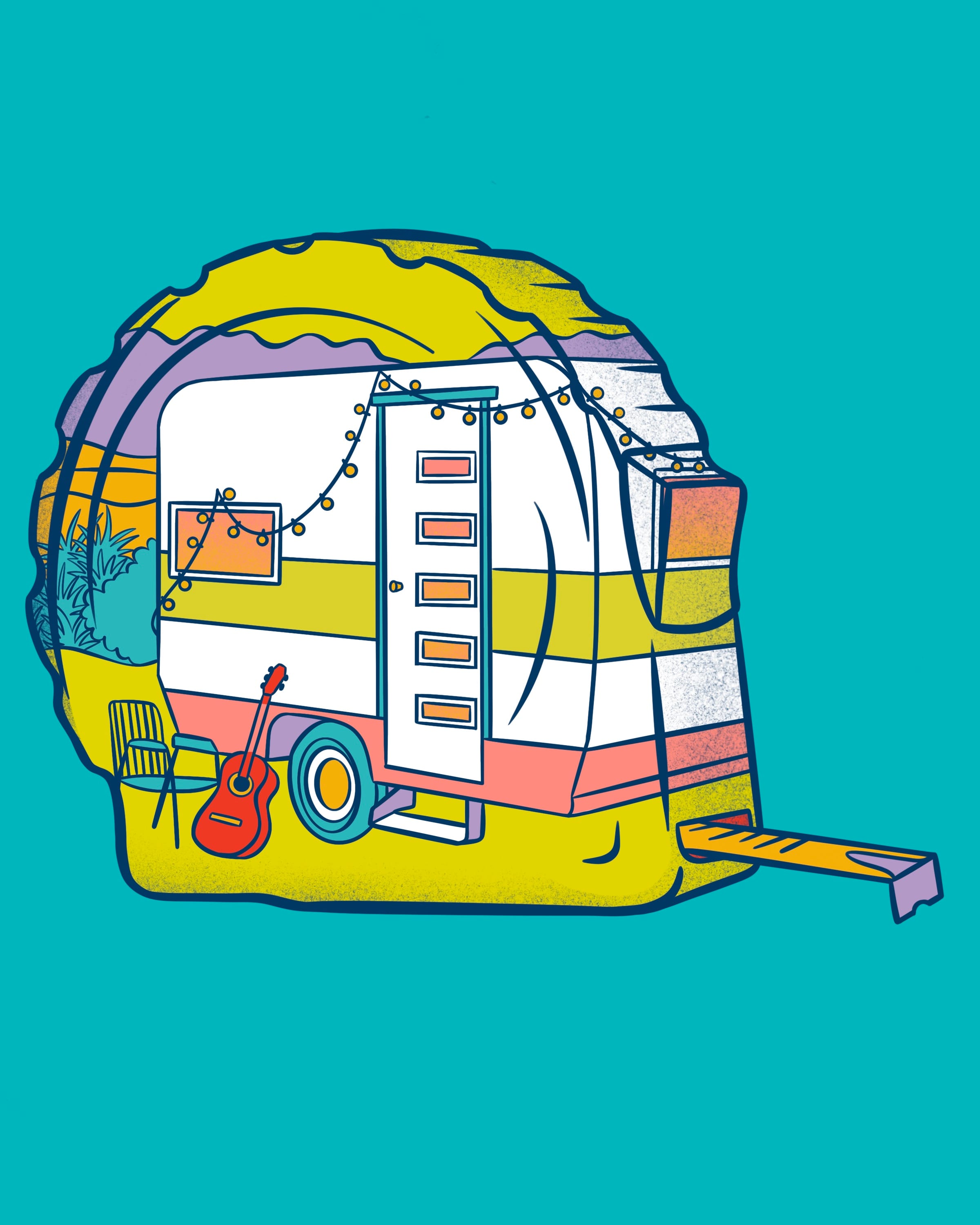
Gear Spotlight: Outdoor Lighting Solutions from Coast
Sponsored
Light up the campground with this rechargeable lantern and voice-activated headlamp.
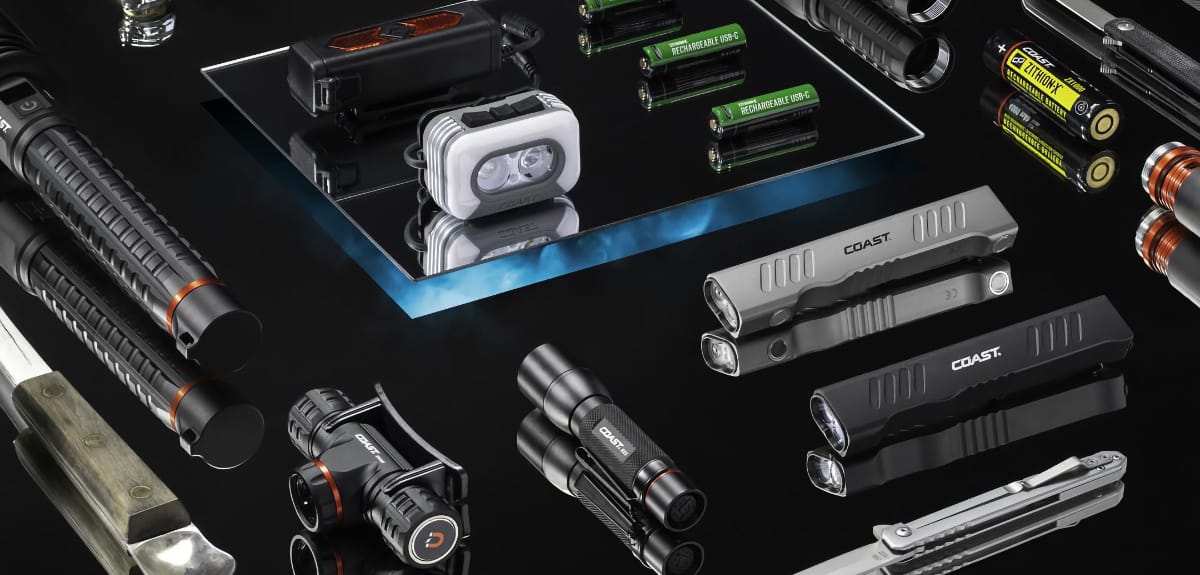
Mechanical & Vehicle Upgrades
Smooth your ride.
When you’re towing many thousand of pounds of trailer—and home—behind you, it’s important to ensure your RV isn’t too bumpy. After all, you have some important items back there. YouTuber Chris Kapperman recommends upgrading your suspension to the Roadmaster Slipper Spring Comfort Ride system. The upgrade costs about $1,000, but with fewer moving parts and less wear on your trailer, it’s well worth it.
Improve your stopping power.
Most travel trailers come equipped with drum brakes on the rear axles, and while they work in most situations they can overheat during heavy use. By upgrading to a disc brake like these from Kodiak, RVers can reduce their stopping distance significantly—a literal lifesaver in an emergency situation.
Get on the level.
Many folks start out using wooden blocks under tires to level their RVs. But after a few bad splinters or cracked blocks, you’ll be looking for a better solution. We’ve found that sturdy plastic levellers work well—Camco ($46) is a decent option. They are light and easy to handle, and they don’t crack or soak up moisture.
Get some traction.
You might have seen a MaxTrax before on overlanding rigs driving down the highway. But the boogie-board-looking traction tools aren’t just for Toyotas and Jeeps. Placed under a tire in mud or sand, they can also help get your camper or tow vehicle unstuck while boondocking in off-grid locales.
Keyless entry.
Upgrading the locks to keyless entry models is one of the easiest ways to add convenience to your rig. RVLock offers models that fit most vehicles, granting access via numeric keypad, wireless key fob, or a traditional key. These locks are also more durable and secure than most factory-installed models.
Keep an eye on those tires.
A tire pressure monitoring system from TireMinder not only makes your RV safer, it can improve the life of your tires, too. The company’s I10 TPMS can simultaneously monitor up to 20 tires with an accuracy of +/- 1 PSI. A 3.15” color display alerts drivers to sudden drops in pressure and overheating that can cause a blowout.
Power up your solar panels.
A solar charge controller ensures that electricity generated from the sun is properly regulated before being stored in your RV's batteries. Victron offers a variety of these devices with different amperage levels to safely support any solar installation. They even come with high-tech features like remote monitoring via smartphone.
Back it up.
Most RVs come pre-wired to add backup cameras these days, which makes installation quick and easy. Furrion offers a variety of options ranging from single-cam packages to systems that include up to four cameras. Images are wireless transmitted to a digital display in the cab of your vehicle, making it much easier to park at the campsite.
Turn your RV into a smart home.
Winegard’s RV Halo system brings smart home features to your RV. The modular system is compatible with a range of Winegard products, allowing remote monitoring of your rig from virtually anywhere. Features include GPS tracking, temperature and humidity alerts, break-in sensors, and Amazon Alexa for activating lights, playing music, and more.
Get yourself some truly great (paper) maps.
Everyone uses Google Maps and GPS these days, and that’s all well and good. But that’s just the thing—anyone can use them. To mark yourself as a road-tripper of distinction, there’s still nothing quite like the crinkle of paper maps and knowledgeable nod of the explorer who knows how to use them. The DeLorme Atlas & Gazetteer series, owned by Garmin these days but dating to the 1970s, continues to stock discerning glove boxes with state-by-state navigational knowhow. And to add cartographic flair to vehicle interior decor, look no further than the stunning work of Oregon’s Raven Maps.
Read your way across America.
Itineraries just mean more when you back up your travel with cultural perspective and great stories. Wildsam recently worked with Lit Hub, the leading site on books and writing, to create an epic state-by-state readers’ roadmap to America.
EDITORS & WRITERS: Jay Bouchard, Kraig Becker, Ken Freund, Matthew Every, Kate Oliver, H. Drew Blackburn and Zach Dundas
COVER DESIGN: Alan Kahler
ILLUSTRATIONS: Ananda Walden
EDITORS & WRITERS: Jay Bouchard, Kraig Becker, Ken Freund, Matthew Every, Kate Oliver, H. Drew Blackburn and Zach Dundas
COVER DESIGN: Alan Kahler
ILLUSTRATIONS: Ananda Walden


